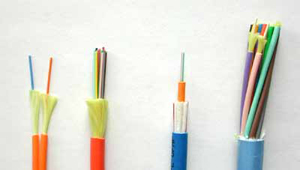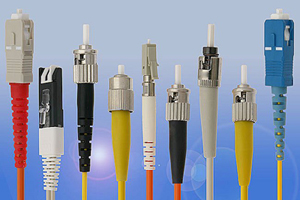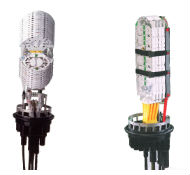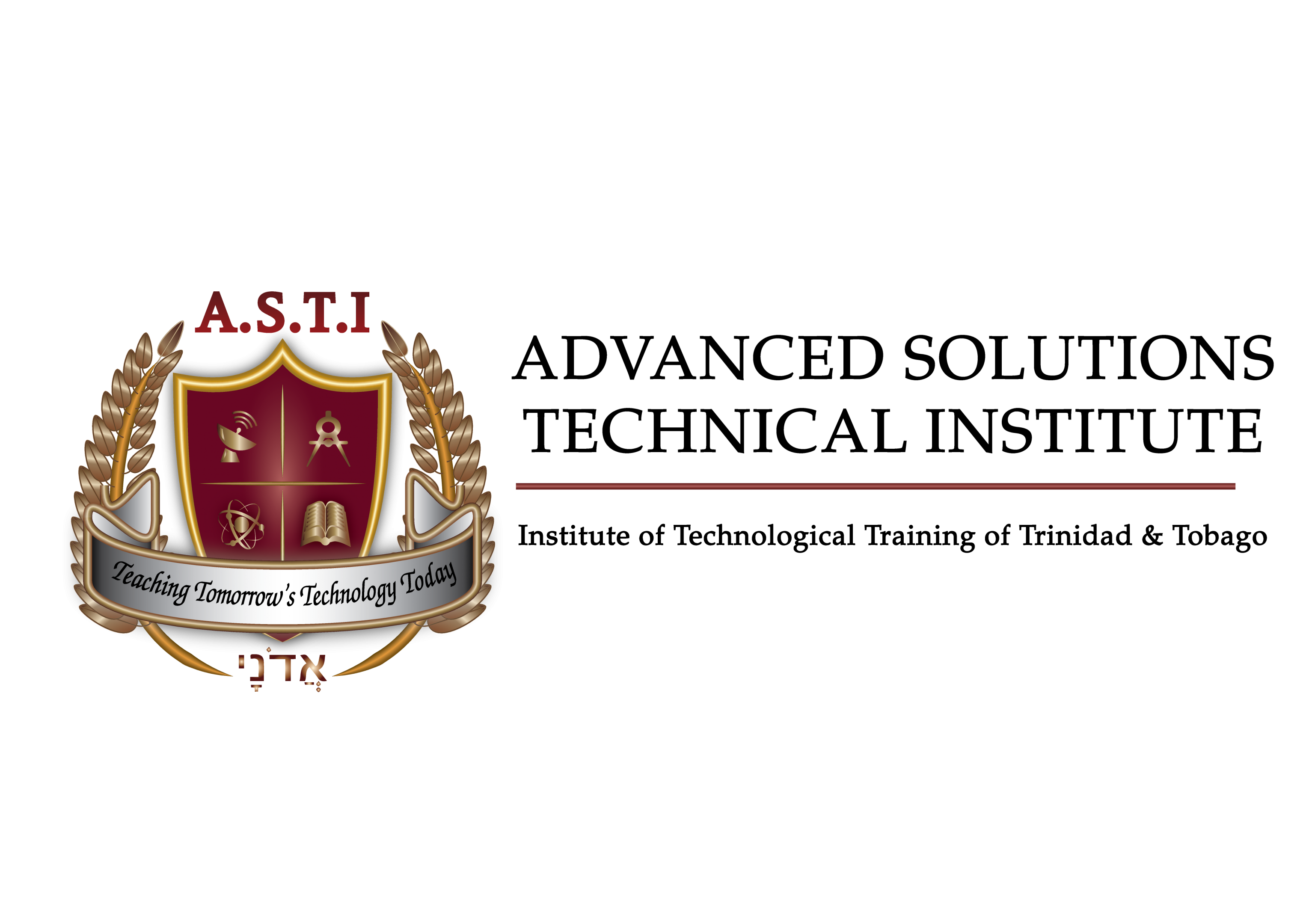Cables
Cat 5e is the fifth generation of twisted pair Ethernet technology. The cable contains four pairs of copper wire conductors and supports networking at Gigabit Ethernet speeds (up to 1Gb per second) over short distances by utilising all four copper wire conductors, and it is backward compatible with ordinary Cat 5.

Cat 5e cable is an enhanced version of Cat 5 that adds specifications to address far end cross talk, or EMI (Electromagnetic Interference), when the signal crosses the end of one unshielded twisted pair onto another twisted pair. It is a high performance cable suitable for installations where high levels of EMI and RFI (Radio Frequency Interference) could be present.
As with all other types of twisted pair EIA/TIA cabling, Cat 5e cable runs are limited to a maximum recommended link length of 90M or channel length of 100M, normal practice is to limit fixed ("horizontal") cables to 90M to allow for up to 5M of patch cable at each end.
It is available as Unshielded Twisted Pair (UTP) and Foil Twisted Pair (FTP) or Screen Foil Twisted Pair (SFTP), which has shielding to provide a measure of extra protection against low and high frequency interference, and variants are available which are suitable for internal and external use.
Cat 5e network cables can be used for 1000Base-T, 100Base-T & 10Base-T networking, as well as voice cabling, ATM and token ring. Although 1000BASE?T was designed for use with Cat 5 cable, the tighter specifications associated with Cat 5e cable and connectors make it an excellent choice for use with 1000BASE?T.

Cat 6 is the sixth generation of twisted pair Ethernet cabling. The cable contains four pairs of copper wire like the previous generation Cat 5. Unlike Cat 5, however, Cat 6 fully utilises all four pairs. Category 6 UTP cable is designed for optimal support of high-speed data protocols delivering 1 Gbps (Gigabit per second) performance to the workstation.
Cat 6 has been the enterprise cabling system of choice for many years. Although only designed to run the same Ethernet protocols as Cat 5e, it is a higher performance system, supporting more than double the frequency and running to a tighter specification.
This gives it significant performance headroom to support the faster protocols like 1000BaseT and is therefore considered more reliable than Cat 5e. A properly installed Cat 6 system will potentially run 10GBaseT over lengths of up to between 30M and 45M. However, this is not guaranteed and may depend on the installation being 'tweaked' to pass.
As with all other types of twisted pair EIA/TIA cabling, Cat 6 cable runs are limited to a maximum recommended run length of 100M - normal practice is to limit fixed ("horizontal") cables to 90M to allow for up to 5M of patch cable at each end.
Cat 6 is available as Unshielded Twisted Pair (UTP) and Foil Twisted Pair (FTP) or Screen Foil Twisted Pair (SFTP), which has shielding to provide a measure of extra protection against low and high frequency interference, and variants are available which are suitable for internal and external use.
Cat 6A is the latest standard of the sixth generation of twisted pair Ethernet cabling. Cat 6A (Augmented Category 6) cables, and associated connectors, take the performance capabilities of copper infrastructure to new levels.
A Cat 6A cabling system is a higher specification than Cat 6 and designed to meet all of the requirements of 10GBaseT Ethernet over distances of up 90M. Cat 6A is backwards compatible with Cat 6 and Cat 5e.
As with all other types of twisted pair EIA/TIA cabling, Cat 6 cable runs are limited to a maximum recommended run length of 100M - normal practice is to limit fixed ("horizontal") cables to 90M to allow for up to 5M of patch cable at each end laying closely together in a uniform manner when installed.
Available as Unshielded Twisted Pair (UTP) and screened Foil Twisted Pair (FTP), which has shielding to provide a measure of extra protection against low and high frequency interference, and are suitable for internal and external use.
Fibre Optic Cables
 You may know that fibre optic cabling is important to applications like the Internet, telephone systems and cable TV, but have you ever wondered about how it actually works, or why it's so perfect for transmitting data? We at CABLING-UK thought you might be curious, so read on to find out what exactly goes into making fibre optic cable, and just how much it's capable of.
You may know that fibre optic cabling is important to applications like the Internet, telephone systems and cable TV, but have you ever wondered about how it actually works, or why it's so perfect for transmitting data? We at CABLING-UK thought you might be curious, so read on to find out what exactly goes into making fibre optic cable, and just how much it's capable of.
Fibre optic cables are constructed using optical fibres, which are long, flexible, hair-width strands of ultra-pure glass. Optical fibres are formed when preform blanks portions of specially manufactured glass are heated to between 3000 and 4000 degrees and then drawn out at a rate of up to 66 feet per second. As optical fibre is pulled, it is constantly monitored by a laser micrometer, which ensures that its diameter is perfectly uniform from start to finish, commercially available fibres for use is telecommunication and data transfer are typically 125 microns in diameter with varying core sizes.
In order for optical fibres to transmit data over long distances, they need to be highly reflective. On their way to being spooled, newly-pulled glass fibres pass through coating cups and ultraviolet ovens, which respectively apply and then cure the thin plastic buffer coating that creates a mirror effect within the fibre.
The finished optical fibre is then extensively tested in a wide range of categories, including Tensile Strength, Refractive Index Profile, Fibre Geometry, Attenuation, Bandwidth, Chromatic Dispersion, Operating Temperature, Temperature Dependence of Attenuation, and Ability to Conduct Light Underwater.
Depending on what type of application it will be used for and how much data it will need to transmit, fibre optic cable can be built around a single strand of optical fibre, or larger groupings of it. To assemble a complete fibre optic cable, the strand or cluster of optical fibre is placed at the core, to be surrounded by a loose tube of PVC, which leaves the fibre room to bend when being routed around corners and through conduit. The loose PVC is then covered with a layer of shock-absorbing aramid yarn usually made of Kevlar. To top it all off, the cable receives a final outer-jacket coating of PVC, which helps to seal out moisture.
In order for the finished cable to transmit data signals, it needs to be connected to the two other main components of a fibre-optic system. The first of these is the optical transmitter, which is a device that converts electrical and analog signals into either On-Off, or Linear modulating light signals then releases that data into the fibre optic cable. The cable then relays the data emitted by the optical transmitter to the optical receiver, which accepts the light signal and reformats the data into its original form.
Optical Fibre has advantages over standard copper coaxial cables, in that it can transmit larger quantities of data with far less loss, is able to maintain signals over long distances, carries little risk of corrosion, and is virtually free from interference. To learn more about applications and specifications contact our technical department at
projects@cabling-uk.co.uk






